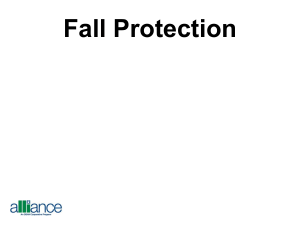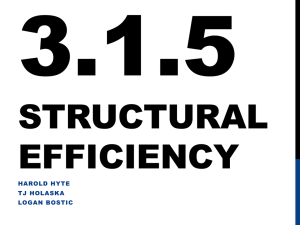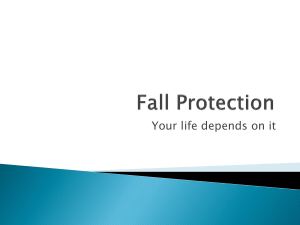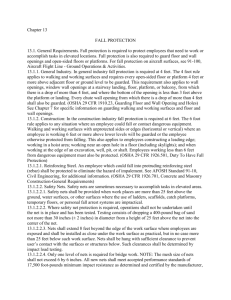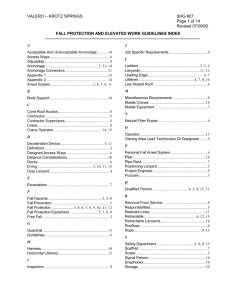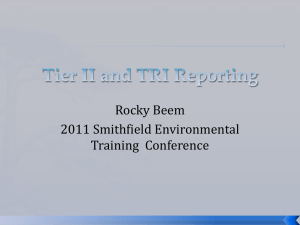Fall Protection Awareness Class
advertisement
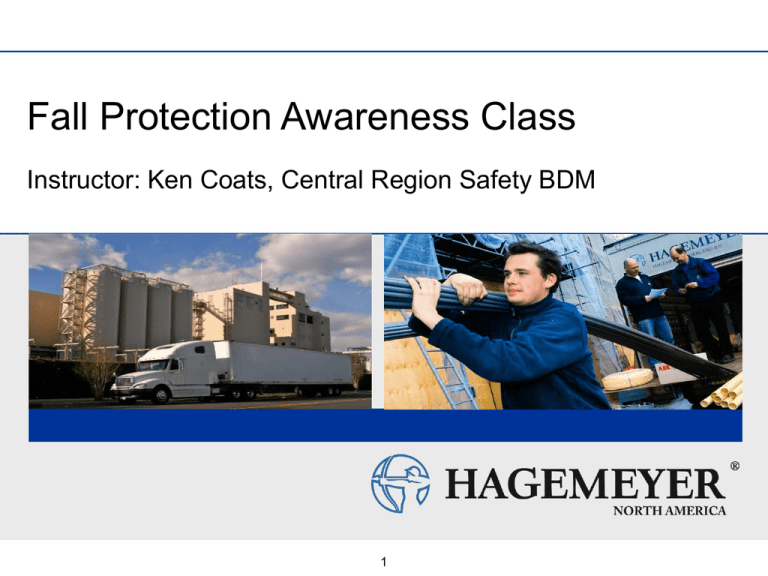
Fall Protection Awareness Class Instructor: Ken Coats, Central Region Safety BDM 1 4 Components of a Personal Fall Arrest System • Body Support • Body Belts • Full Body Harness • Connectors • Lanyards • Self Retracting Lifelines • Vertical and Horizontal Systems • Anchorage • Engineered • Non Engineered • Rescue 2 Full Body Harness • OSHA 1926.502 (d) (16) (ii): • Personal fall arrest systems shall limit the maximum arresting force on an employee to 1,800 pounds (8 kN) when used with a body harness. ANSI Fall Arrest (always must have) Dorsal D-Ring 3 Connectors • Snap hooks and carabiners must be self-locking and self-closing. • All connectors must meet 5000lbs. • All connectors must be connected to a compatible connection. • NEW ANSI Standard (11/2007) • Connectors shall meet 5000 lbs. and the gate shall meet 3600 lbs. 4 Lanyards • Many different types of lanyards • Needs to be able to reduce energy from 5000 lbs force to… • 1800 lbs for OSHA • ANSI 900 lbs or less…… 5 Shock Absorbing Lanyards • Always connect the shock pack to the Dorsal D-ring • Make sure you are not exceeding the weight limit of the lanyard • Never connect two lanyards together • 100% Tie-Off 6 Clearance Calculations General Rule: “You need 12.5 ft of clearance with a 6 ft lanyard” Freefall + 6.0 ft for Free Fall Deceleration 3.5 ft for Deceleration + 1.0 ft for D-ring slide Safety Factor 2.0 ft for Safety Factor 12.5 ft clearance required 7 Clearance Calculation What if I don’t have 12.5 ft of clearance? • Raise the anchor point • Use a shorter lanyard • Use a SRL SRL Example • 3.5 ft for Deceleration • 1.0 ft for D-ring slide • 2.0 ft for Safety Factor • 6.5 ft clearance required 8 Anchorage and Anchorage Connectors • Anchorages are defined as secure points to attach an anchorage connector to be used in conjunction with a fall protection or rescue system. • Anchorages used for fall protection shall be capable of supporting a load of 5,000 lbs. per worker, unless certified by a qualified person who maintains a 2:1 safety factor. • The maximum arresting force (MAF) on the anchor shall be no more than 1,800 lbs. 9 Rescue & Escape • OSHA 1926.502 (d) (20):The employer shall provide for prompt rescue of employees in the event of a fall or shall assure that employees are able to rescue themselves. • ANSI Z359.2 Rev. If emergency services are not able to answer a request for assistance in a timely manner or if they do not have adequate equipment, then companies should have in-house rescue procedures and trained personnel in place • Program effectiveness should be evaluated at regular intervals of no more than two years 10
